Chapter 5: Anaerobic Training Adaptations
1/38
There's no tags or description
Looks like no tags are added yet.
Name | Mastery | Learn | Test | Matching | Spaced |
|---|
No study sessions yet.
39 Terms
What does anaerobic mean?
Anaerobic refers to processes that occur without oxygen.
What energy pathway is primarily used in anaerobic training?
Fast Glycolysis
What is the recommended rest period for a 25-year-old female soccer midfielder doing 30-second sprint intervals?
1.5 to 2.5 minutes (Work:Rest ratio of 1:3 to 1:5)
What is the recommended rest period for an 18-year-old high jumper doing 5-second lateral bounds?
60 to 100 seconds (Work:Rest ratio of 1:12 to 1:20)
What are some potential positive effects of anaerobic training?
Improvements in neural, muscular, connective tissue, hormonal, cardiovascular, and respiratory adaptations.
What are some potential negative effects of anaerobic training?
Overtraining and detraining.
How does anaerobic training affect the central nervous system (CNS)?
It increases motor cortex activity with higher force development and new exercises.
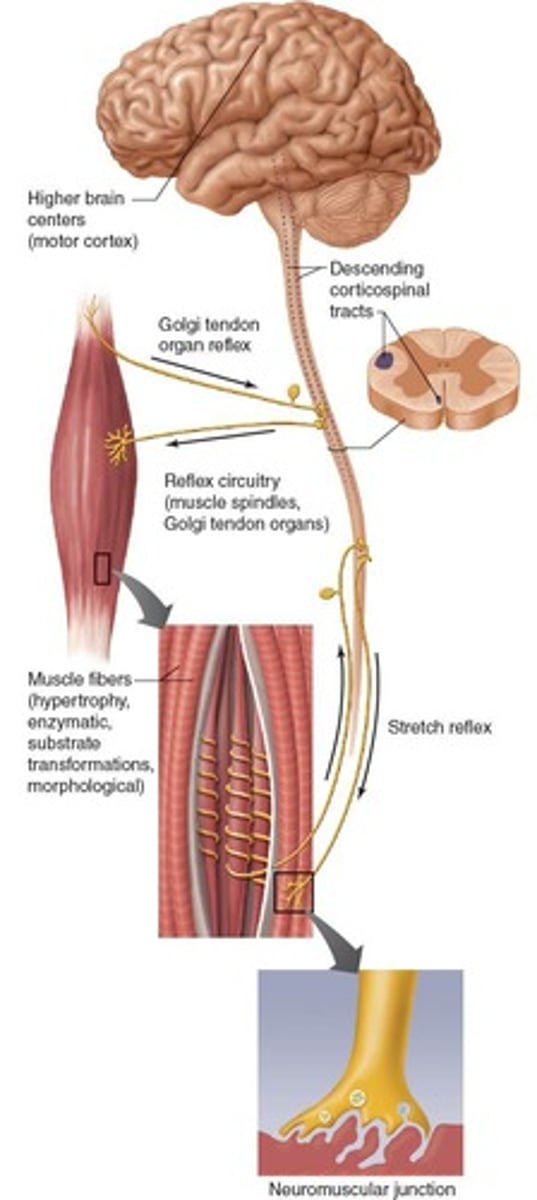
What is the Size Principle in muscle recruitment?
Motor units are recruited in a sequential order by size to produce high levels of force.
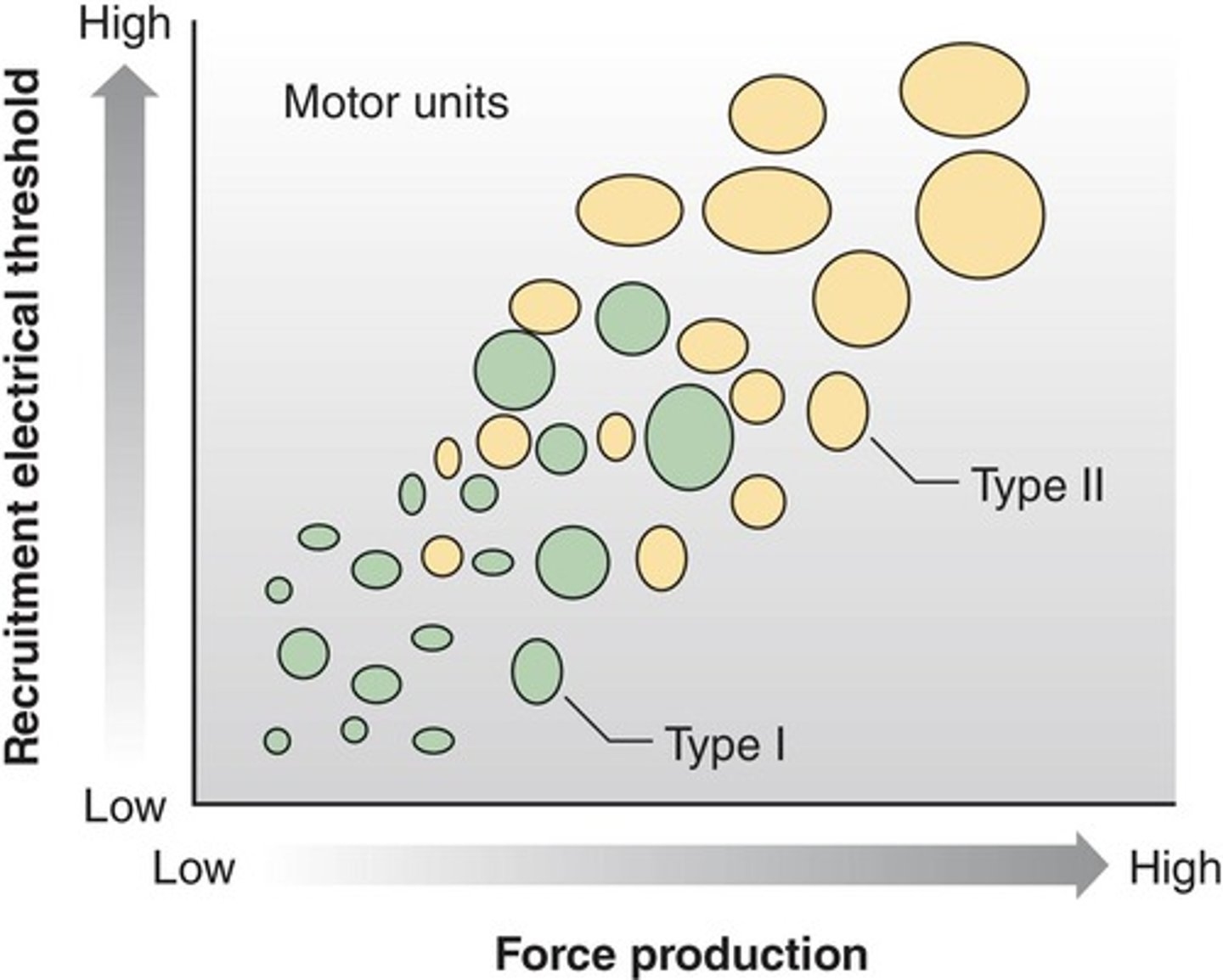
What changes occur at the neuromuscular junction (NMJ) due to anaerobic training?
Increased area of NMJ, more dispersed synapses, and greater acetylcholine receptor dispersion.
What is neuromuscular reflex potentiation?
Enhanced reflex response that increases the magnitude and rate of force development.
What does an increase in electromyography (EMG) indicate?
Greater neural activation and potential strength and power increases.
What is hypertrophy in the context of muscular adaptations?
Muscular enlargement from an increase in the cross-sectional area of existing fibers.
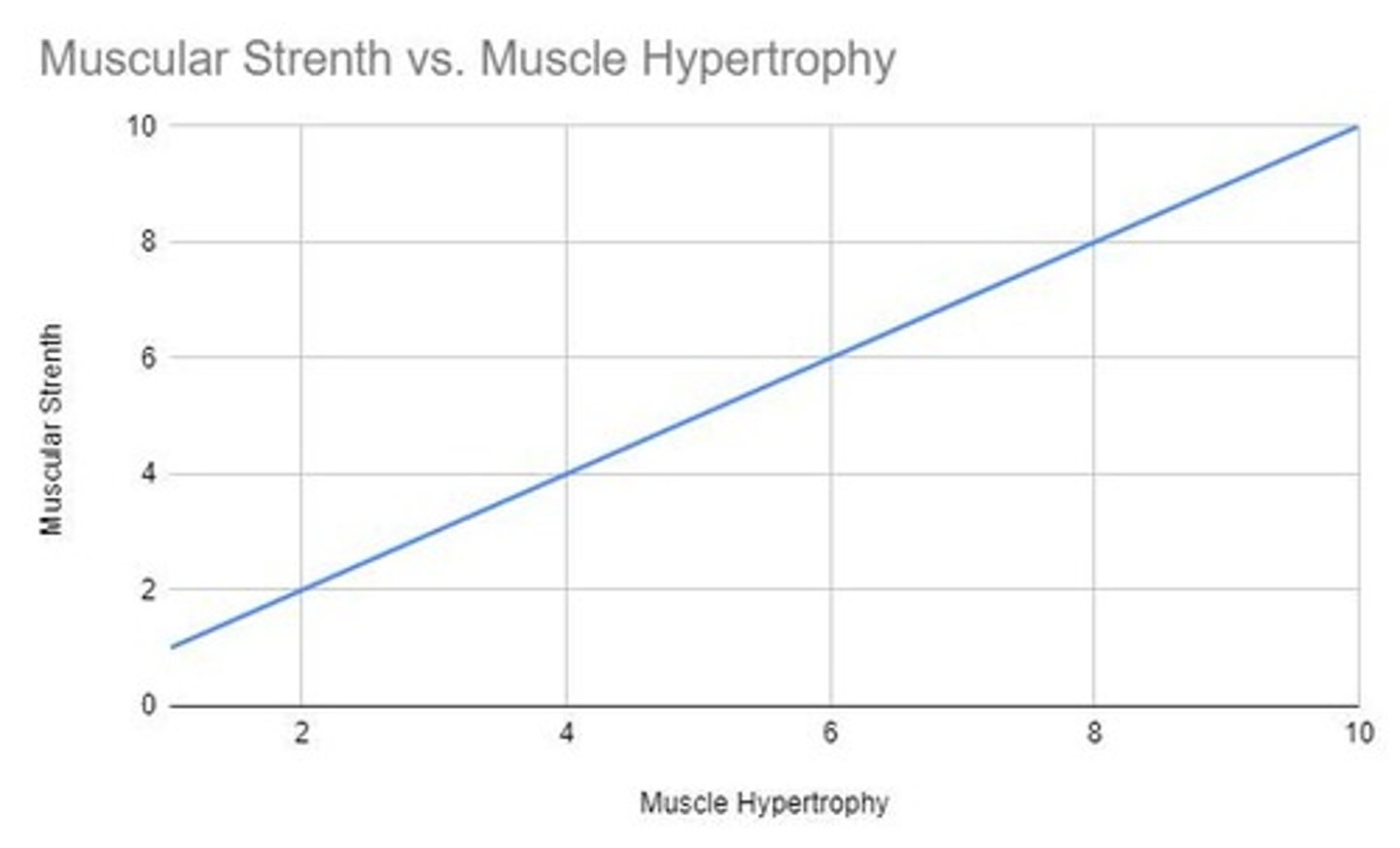
What is hyperplasia?
Increase in the number of muscle fibers via longitudinal fiber splitting.
Which muscle fiber type typically experiences greater size increases with resistance training?
Type II fibers.

What structural changes occur in muscle due to resistance training?
Increased myofibrillar volume, cytoplasmic density, and sodium-potassium ATPase activity.
What is the minimal essential strain (MES) in bone physiology?
The threshold stimulus that initiates new bone formation, approximately 1/10 of the force required to fracture bone.
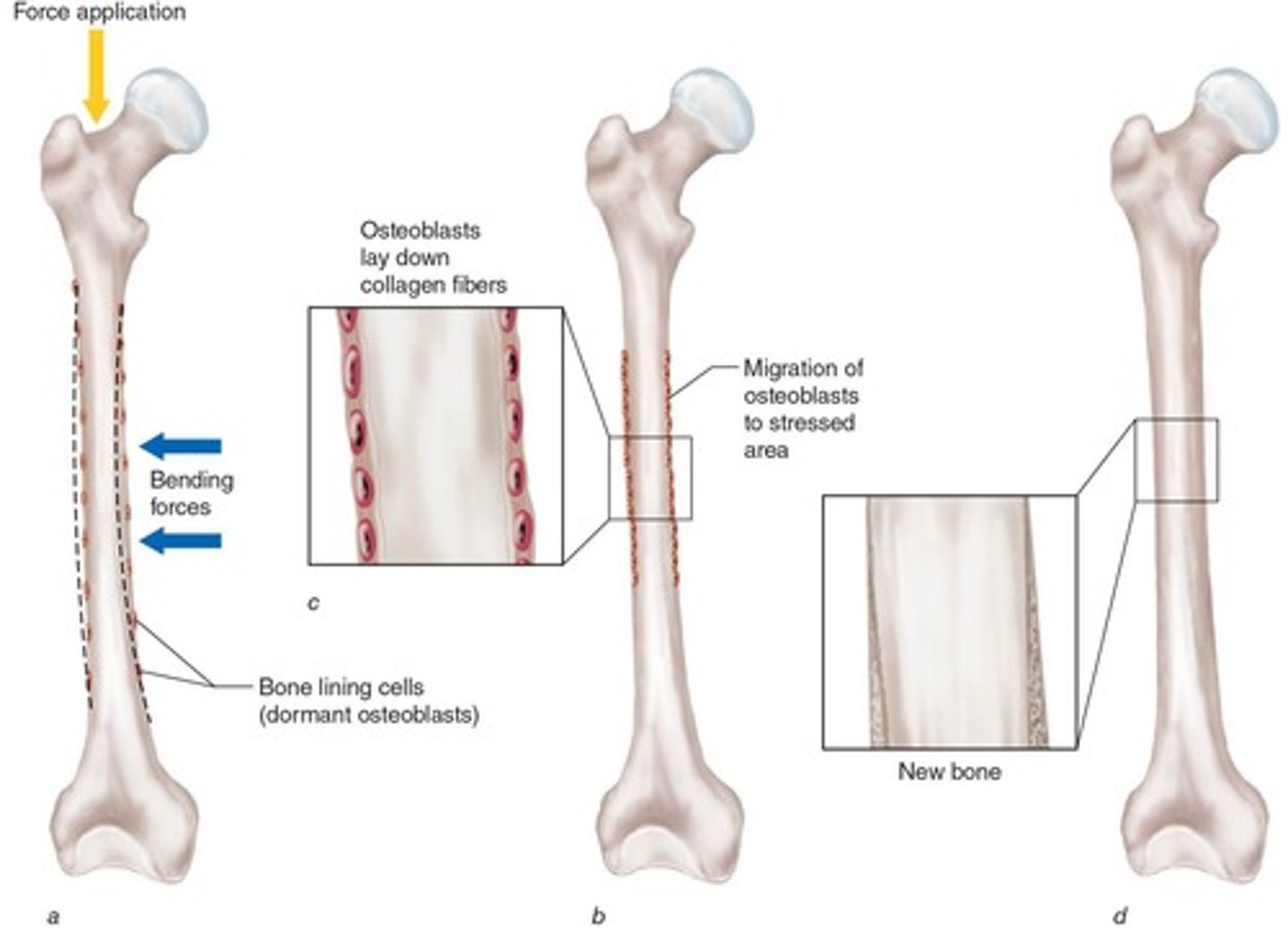
How does muscle strength influence bone mineral density (BMD)?
Increased muscle strength and hypertrophy can lead to higher BMD due to greater force exerted on bones.
What factors stimulate bone growth?
Magnitude, rate, direction of loading forces, and volume of loading.
What is the relationship between exercise intensity and connective tissue adaptation?
The degree of tissue adaptation is proportional to the intensity of exercise.
What types of connective tissues adapt due to anaerobic training?
Tendons, ligaments, and fascia.
Where can connective tissues increase strength and load-bearing capacity?
At the junctions between tendons (and ligaments) and bone surfaces, within the body of the tendon or ligament, and in the network of fascia within skeletal muscle.
What specific changes in tendons contribute to size and strength increases?
An increase in collagen fibril diameter, a greater number of covalent cross-links, an increase in the number of collagen fibrils, and an increase in the packing density of collagen fibrils.
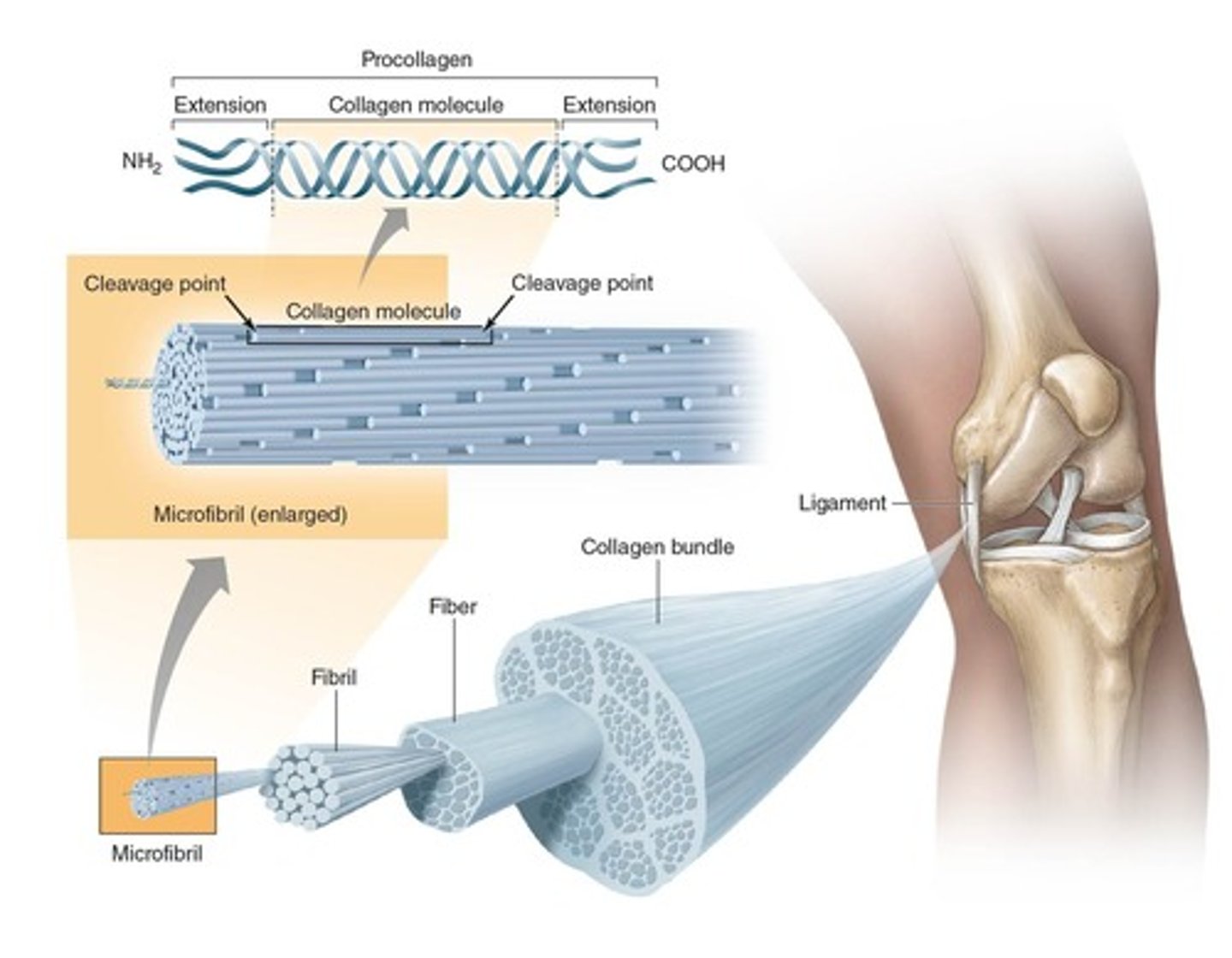
What are the main functions of cartilage?
To provide a smooth joint articulating surface, act as a shock absorber for forces directed through the joint, and aid in the attachment of connective tissue to the skeleton.
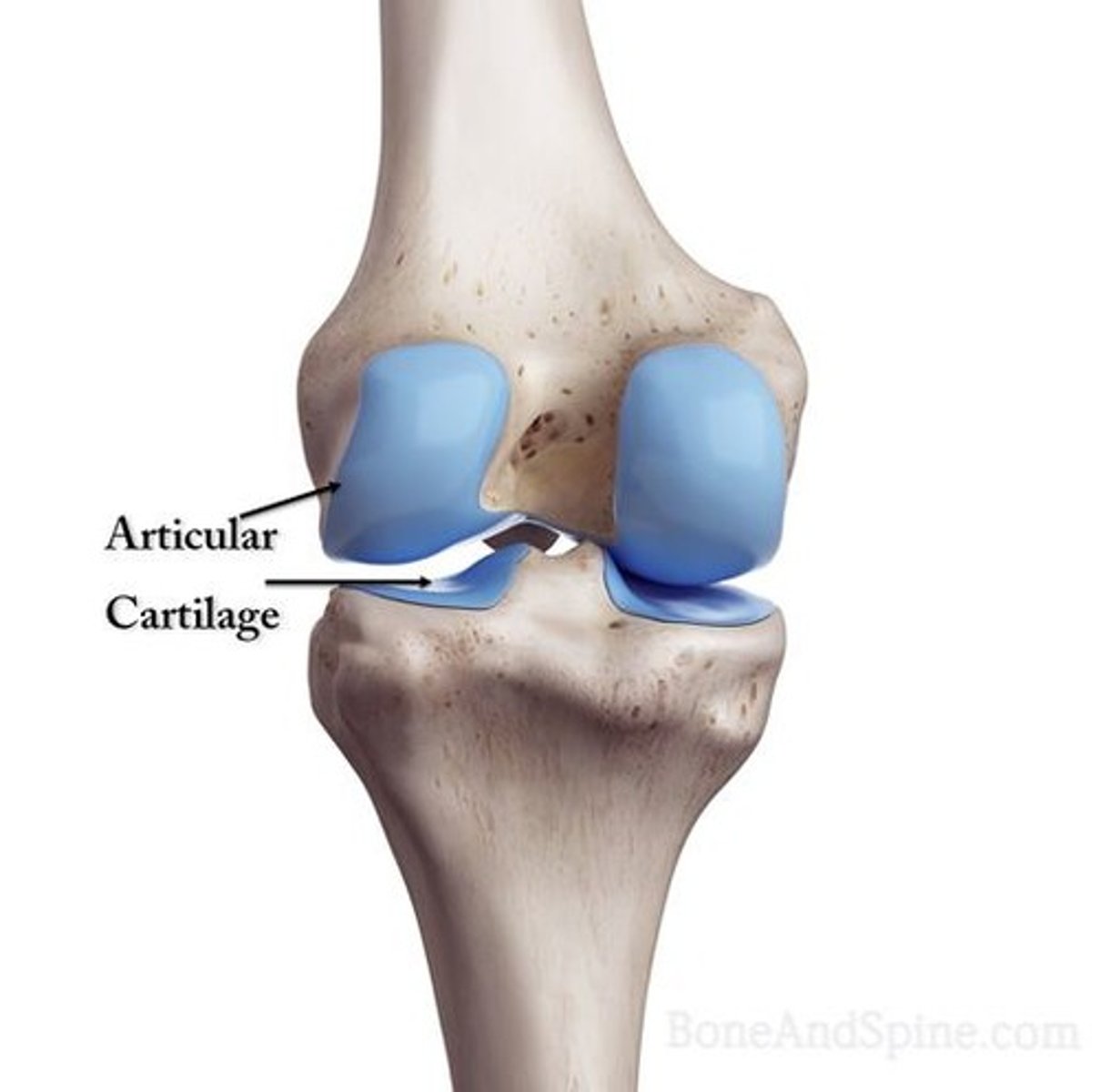
How does cartilage receive nutrients?
Cartilage lacks its own blood supply and depends on diffusion of oxygen and nutrients from synovial fluid.
What is the relationship between joint mobility and joint health?
Movement about a joint creates changes in pressure that drive nutrients from synovial fluid toward the articular cartilage, promoting joint health.
What are the effects of acute anaerobic exercise on cardiovascular function?
Increased cardiac output, stroke volume, heart rate, oxygen uptake, systolic blood pressure, and blood flow to active muscles.
What type of training can improve V02max?
High volume anaerobic training with short rest periods can moderately improve V02max.
How does anaerobic training affect muscle fibers?
Type IIx fibers can transition to type IIa fibers, reflecting greater fatigue resistance.
What is functional overreaching?
Excessive training leading to short-term decrements in performance, recoverable in a few days or weeks.
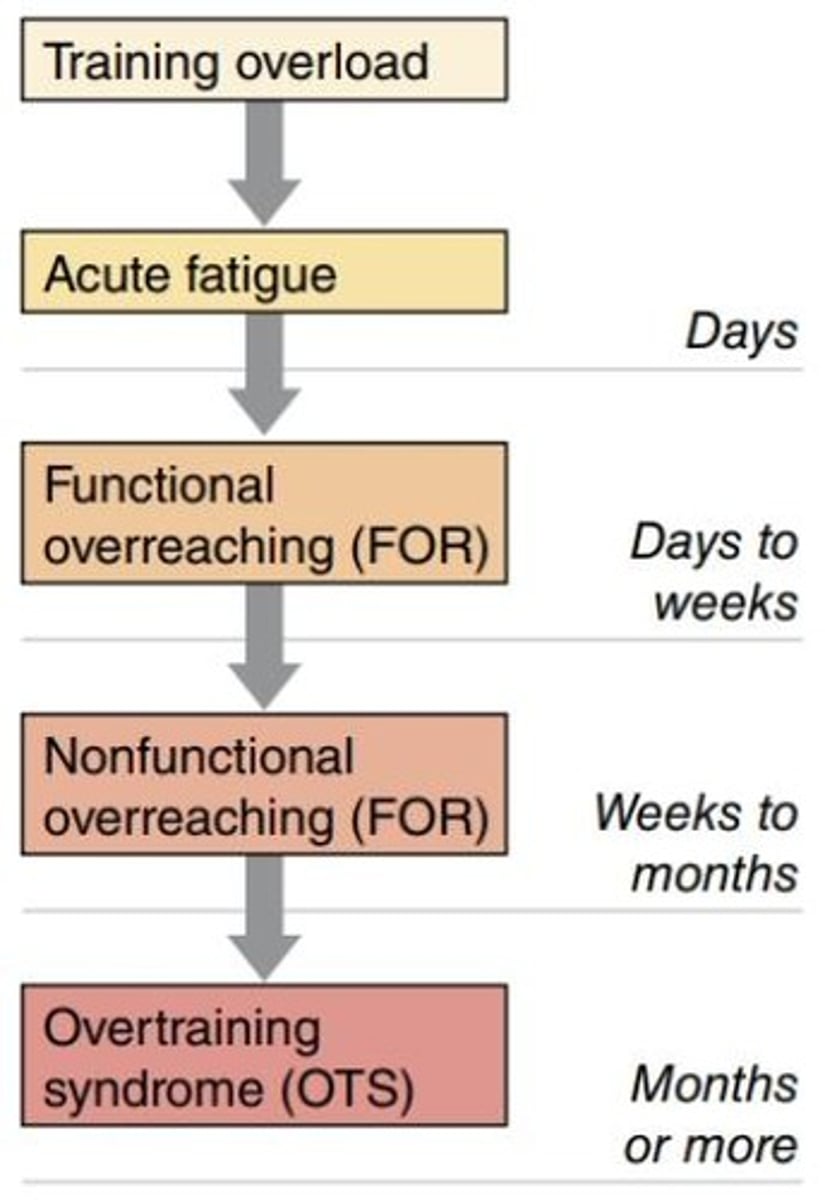
What are the signs of non-functional overreaching?
Decreased performance, increased fatigue, decreased vigor, and hormonal disturbances.
What characterizes overtraining syndrome (OTS)?
A prolonged maladaptation leading to decreased performance, lasting six months or longer without recovery.
What is detraining?
The decrement in performance and loss of physiological adaptations following cessation or substantial reduction of training.
What is the 'reversibility' principle in training?
Adaptations made during training can disappear when the training load is insufficient or removed.
What is a common recovery time for overtraining syndrome?
Recovery typically takes between 4 to 12 weeks.
What are some examples of acute fatigue?
Sore or aching muscles and headaches.
What is the importance of tapering or deload periods in training?
They are crucial for recovery and can enhance performance when managed properly.
What happens to muscle fibers after 7-13 months of no training?
There is a decrease in all muscle fiber types.
What is a practical way to stimulate connective tissue adaptations in athletes?
Incorporate high-resistance weight training and high-intensity interval training.
What is the effect of concurrent training?
It results in more muscular strength and aerobic power compared to training in isolation.